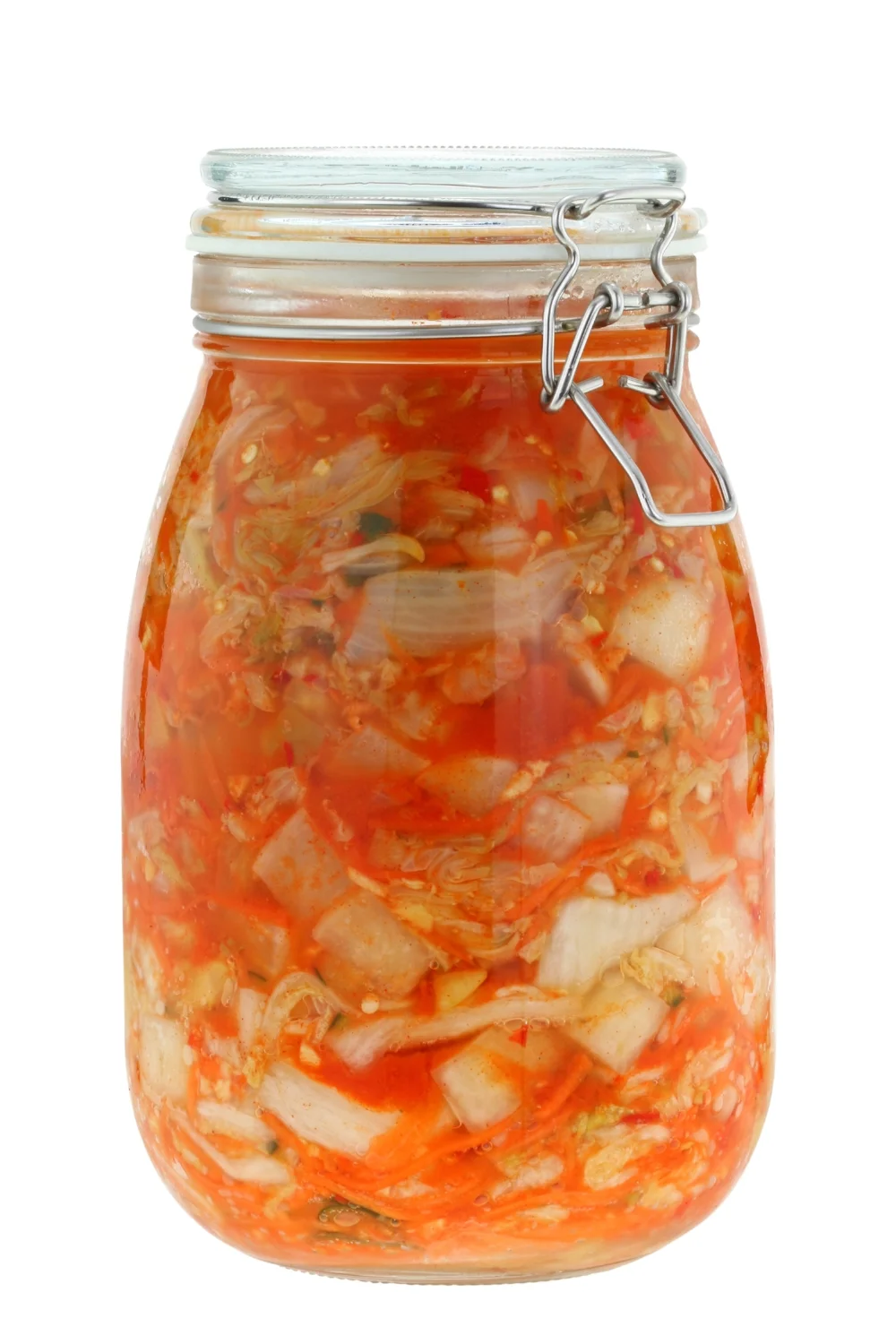Kraut with Fennel and Apple
Kraut recipe
Kraut and sauerkraut are fermented cabbage and other vegetables. It’s high in vitamin C, digestive enzymes and natural lactic acid bacteria, such as lactobacillus. Sauerkraut juice has been studied to benefit digestive issues like leaky gut, diarrhea and constipation, and is also effective at helping you kick a cold fast.
In this sauerkraut recipe I've added fennel and apples.
EQUIPMENT:
Large mixing bowl
Sharp knife
INGREDIENTS:
3.3 lb (1.5 kg) of cabbage
7 oz. (200 g) apples
5.2 oz. (150 g) fennel
5.2 oz. (150 g) onions
1.4 oz. (40 g) sea salt (coarse)
0.1-0.14 oz. (3-4 g) fennel seeds
Optional. Add a starter to help kick-start your fermentation process – this can be a fermented drink like kombucha, kefir, or some of the liquid from a previous batch of fermented veggies. Note however that vegetables will ferment without it; the starter just helps to get the process on its way.
DIRECTIONS:
Wash and process the vegetables. Be sure to rinse the skins of each vegetable thoroughly.
Remove one of the outer leaves of the cabbage and put it aside.
Slice the cabbage into quarters then chop it into 1 cm wide strips.
Remove the apple cores and dice into small sections.
Chop the fennel.
Peel and dice onions.
Weigh all the ingredients (except the outer cabbage leaves) and place them in a large mixing bowl.
Massage the veggies to release their juices– about 5-10 minutes.
Transfer the kraut mixture to your preserving jar, pressing down as you pack the jar so that more brine juices are released. Your goal is to fill the jar just up to 1-inch (2-3 cm) below the lip, allowing space for expansion.
Cut or fold the reserved cabbage leaves to fit on top of the mixture and press it down so that the brine is above the leaf. Seal the jar and place out of direct light.
Allow to ferment for 7 to 21 days at room temperature. Warmer temperatures will speed up the process, cooler will slow it down.
The lid must be opened every day to allow the jar to “burp” (release built-up gases).
Taste your kraut after 3 days. Have a little patience with it. I find the kraut to be best after about 3-4 weeks time for flavor and texture.
When you're happy with taste and texture, transfer your kraut to a cooler temperature. Place it in the cellar or in your refrigerator. This will slow down the fermentation process, allowing you to keep it for several months.
HOW TO SERVE:
Serve kraut with meat, fish dishes or with rice or other vegetables.
Add your kraut to salads, on top of your avocado toast, on scrambled eggs, in sandwiches and rolls, use it as dip or pickles or as a flavor enhancer instead of salt.
GENERAL THOUGHTS ON FERMENTATION:
Start slow. If you are new to fermented foods, start with very small portions and proceed slowly.
The ideal temperature for lacto-fermentation of fruit and vegetables is 22 degrees.
Taste your ferment every day. There's no special moment at which a ferment is "ready" - it's all a matter of taste. After just a day or two, the ferment will develop a tang. Keep tasting it every day until it reaches the level of tartness you want.
A good sign that your vegetables will be ready is when you open the jar and there is a sour (think vinegar-y) flavour, and bubbles start to travel up the inside of the glass when tapped or moved. At this point, transfer to the fridge, where they will continue fermenting, but at a much slower pace.
Mold. If some vegetables emerge at the top of the liquid, they may develop a layer of mold. Simply scrape this off and make sure the remaining vegetables are weighted under the liquid. The mold is harmless and will not ruin the ferment.
















